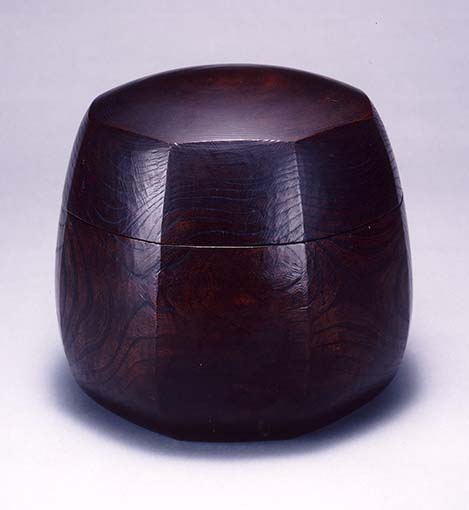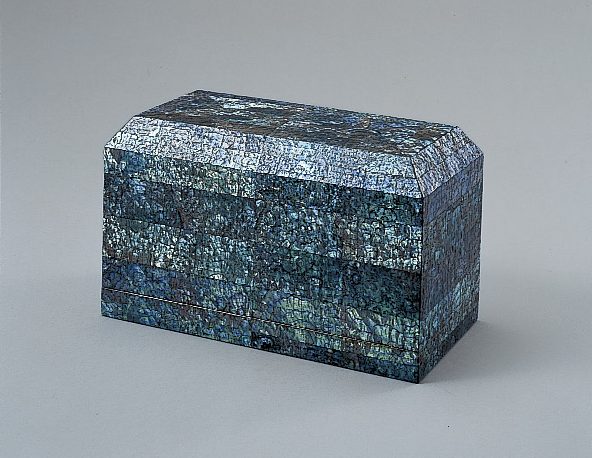
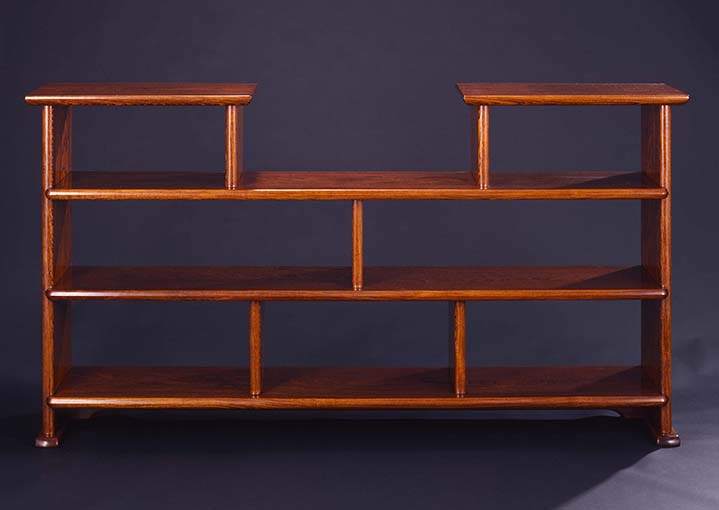
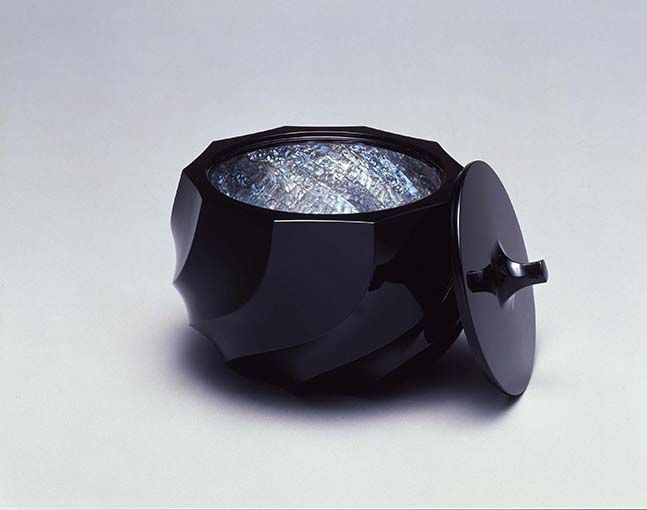
[Audio Guide]
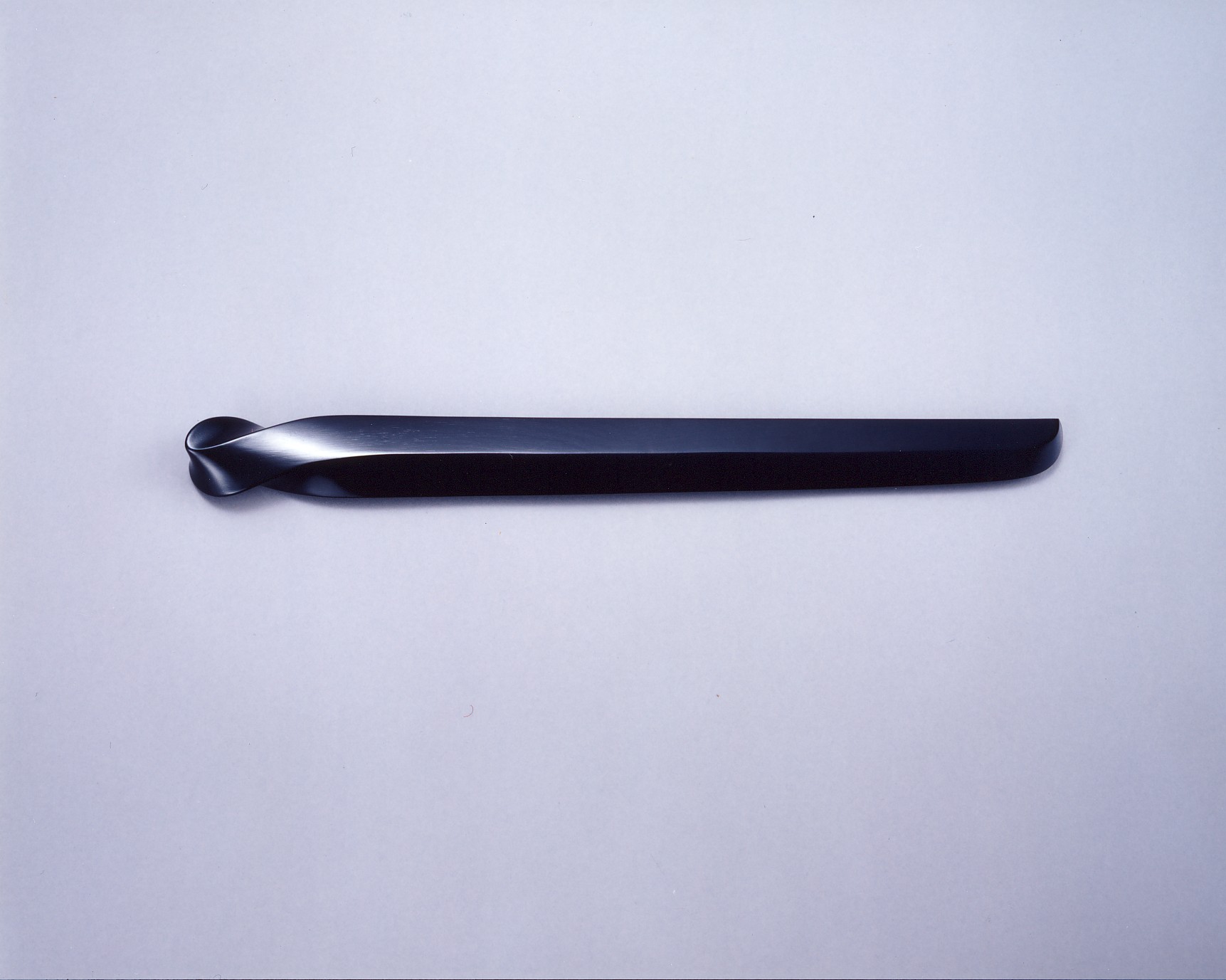
[Audio Guide]
The simple, powerful, and ergonomic works of Kuroda Tatsuaki are admired by both scholars and artists. He produces items for daily use that are kept close to hand, such as shelves, desks, hibachi, tea saucers and bowls, etc., and small boxes for letters and other items. The handle section of the paperknife features Kuroda’s signature twist technique and shows off the woodgrain to maximum effect. It is one of the favorite pieces of scholars such as Shiga Naoya, Mushanok ji Saneatsu, and Kawabata Yasunari. Paper Knife of Black Persimmon Wood was produced by applying fuki-urushi (uncolored lacquer) to the wood and not black lacquer. ‘Black persimmon wood’ is a rare material where the heartwood of the persimmon tree has turned black. The wood is hard but easily fractured, and it requires skill in its handling. According to Kuroda, it is an extremely interesting material, and he has said that, “When you are shaving wood, the most perfect line can only be cut once.”
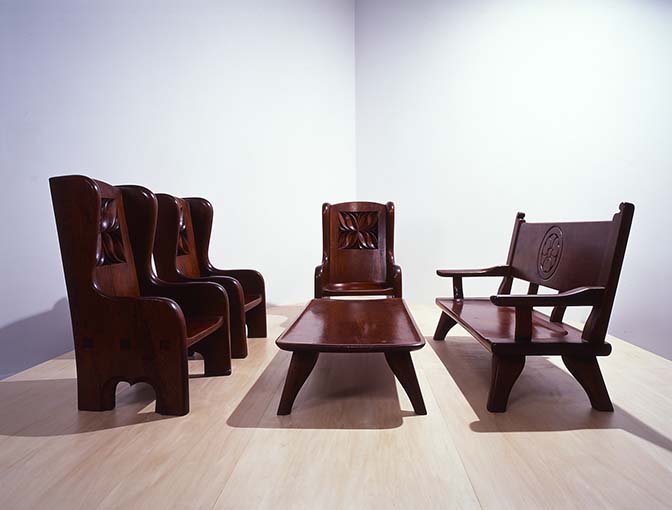
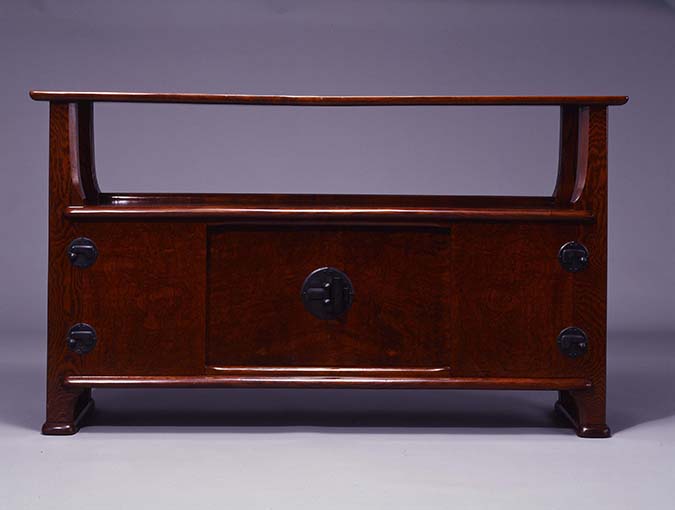
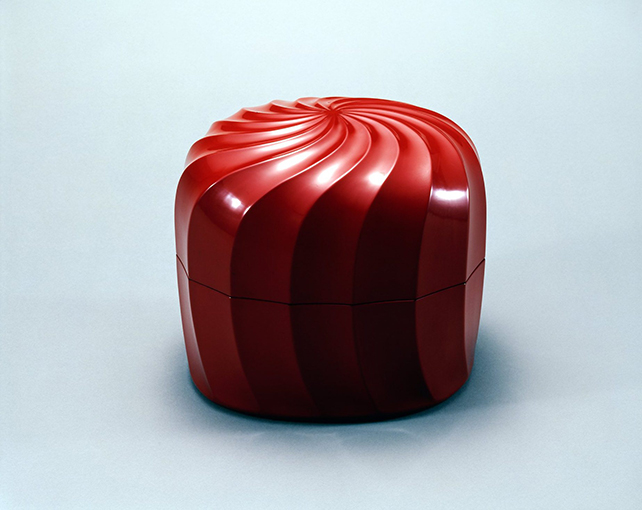
[Audio Guide]
Ridged lines swirl from the center of this elliptical lid, undulating over the surface and covering the box to the bottom. This gentle, animated movement gives the work a captivating aura. The title of the work comes from the sixteen ridges that emanate from the box lid. This work is not made from a malleable material like clay—instead a unique shape has been created by carving a stiff mass of wood and adding a twist pattern to it. This screw design is one of the characteristic features of Kuroda Tatsuaki’s work. Kuroda has said that in early childhood he held a knife before he held a pencil, and that “My true teachers were tools,” so such an inclination seems inevitable.
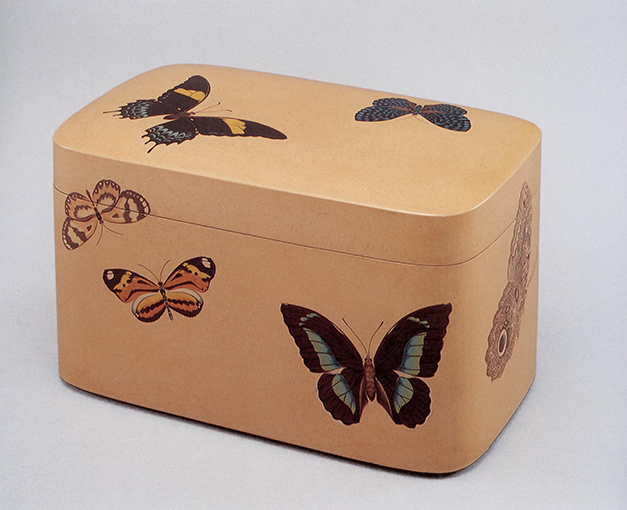
[Audio Guide]
With his activities based in Kyoto, during the late 1940s Kuroda Tatsuaki received commissions from the Hokuriku region through his friend Munakata Shikō, who had been evacuated to Toyama prefecture. Kuroda produced many works for these commissions, including the present work. In a chronological document contained in an anthology of his own works, Kuroda records that his production during this period was “to make a variety of works for the pursuit of urban life and its shortage of daily commodities.” Kuroda was accomplished at red-and-black lacquer arts and woodcrafts, and there are some of his works from this period that use colored lacquer. This delicately colored box is not only an expression of the joys of spring seen during his visit to a snowy region, as the variously sized butterflies minutely rendered in lacquer can also been seen as representing the hope of moving into a new era. This is a rare work, as there are few examples of Kuroda making applied lacquer images.
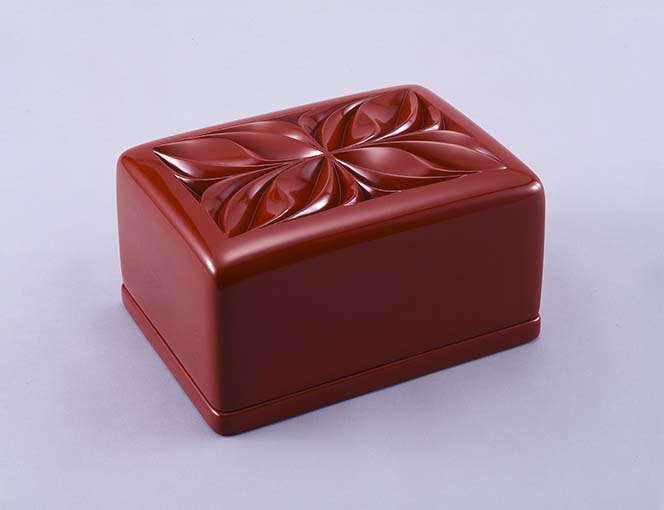
[Audio Guide]
This casket has a gently bulging lid engraved with one of Kuroda Tatsuaki’s distinctive floral designs. The shape of the lid, comprising ridges extending from the center to all four sides and curved surfaces undulating along the ridges, is further accentuated by the application of red lacquer. The carved floral patterns that often appear in Kuroda’s works are said to have been created with reference to medieval European furniture patterns he found in books. The black lacquered bottom of the box has a vermilion lacquer inscription reading “Made by Taichi Tatsuaki in midsummer 1941.” Kuroda unwaveringly devoted himself to his craft and never shrank from painstaking handiwork, saying, “The path of the artisan is all about luck, foolishness, and persistence”. The appellation “Taichi” which he adopted literally means “great fool.” This indicates the uniquely modest and earnest attitude toward his craft that underlies even Kuroda’s most splendid works.
